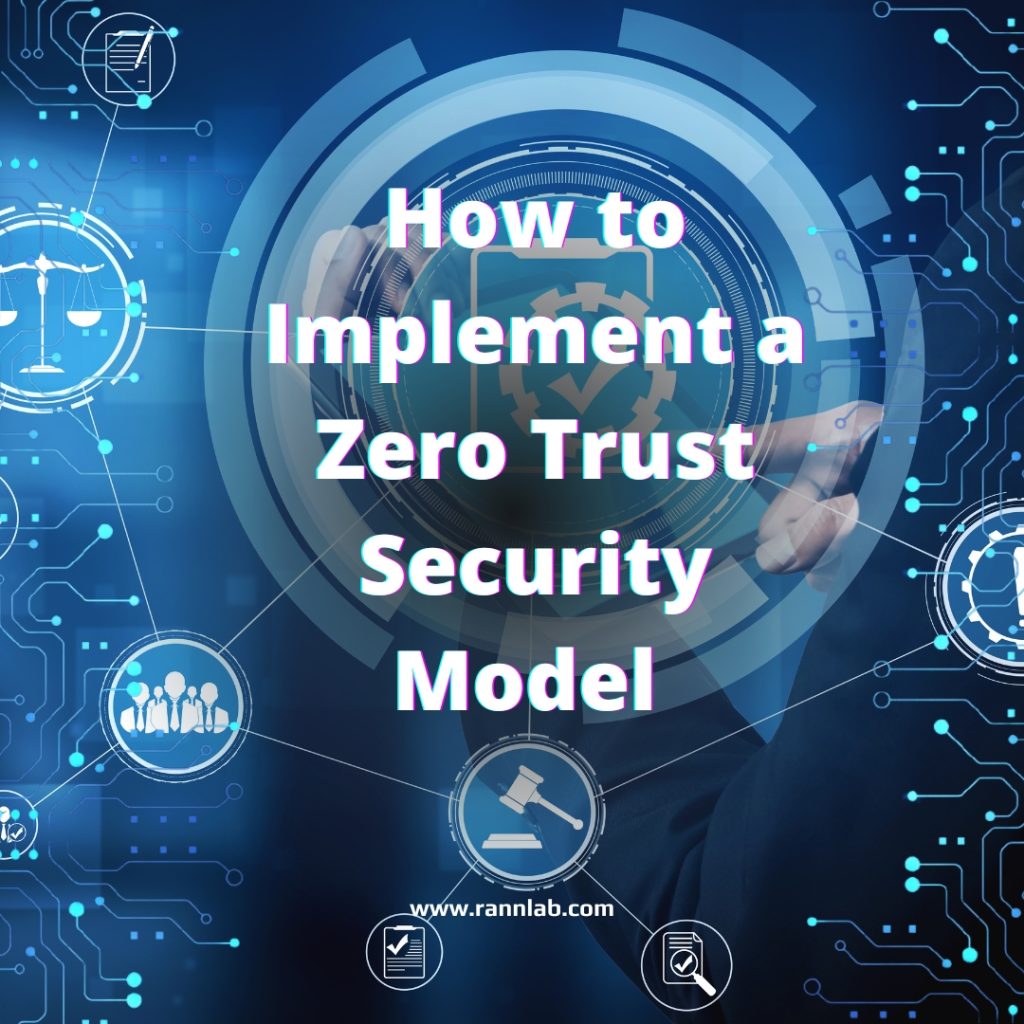
In an increasingly digital and interconnected world, traditional perimeter-based security measures are no longer sufficient to protect against sophisticated cyber threats. The Zero Trust security model has emerged as a robust approach that assumes no trust by default, regardless of whether the user is inside or outside the network perimeter. In this guide, Rannlab, a trusted IT consulting and solutions provider, presents a step-by-step approach to implementing a Zero Trust security model for your organization.
Step 1: Assess Your Current Security Landscape: Begin by assessing your current security landscape. Identify potential vulnerabilities, evaluate existing security controls, and understand the flow of data within your organization. This assessment will help you identify areas where the Zero Trust model can be implemented effectively.
Step 2: Establish a Zero Trust Mindset: Implementing a Zero Trust model requires a shift in mindset. Embrace the philosophy that no user, device, or application should be inherently trusted, and verify all entities attempting to access resources. Communicate this mindset throughout the organization to ensure buy-in and understanding from all stakeholders.
Step 3: Implement Strict Access Controls: Implementing strict access controls is a fundamental component of the Zero Trust model. Adopt multi-factor authentication (MFA) for all users to ensure their identities are verified. Additionally, adopt the principle of least privilege (PoLP), granting users the minimum level of access necessary to perform their tasks. Regularly review access permissions and revoke unnecessary privileges.
Step 4: Segmentation and Microsegmentation: Implement network segmentation and microsegmentation to limit lateral movement within your network. Divide your network into smaller segments or zones based on user roles, applications, or data sensitivity. Apply granular access controls between segments, allowing only authorized communication between them. This approach prevents unauthorized access and contains potential breaches.
Step 5: Embrace Continuous Monitoring and Analytics: Implement continuous monitoring and analytics to detect and respond to security threats in real time. Deploy security information and event management (SIEM) tools that collect and analyze log data from various sources. Leverage user and entity behavior analytics (UEBA) to detect anomalies and potential security breaches. Implement threat intelligence feeds and integrate them into your monitoring systems.
Step 6: Employ Encryption and Data Protection: Ensure robust encryption and data protection mechanisms are in place to secure sensitive information. Encrypt data both at rest and in transit, leveraging industry-standard encryption algorithms. Implement data loss prevention (DLP) solutions to prevent unauthorized data exfiltration. Regularly review and update your encryption and data protection policies to stay ahead of evolving threats.
Step 7: Educate and Train Employees: Employee education and training are vital to the success of a Zero Trust security model. Conduct regular security awareness training sessions to educate employees about the principles of Zero Trust and the role they play in maintaining a secure environment. Emphasize the importance of following security best practices, such as strong password management, avoiding phishing attacks, and promptly reporting suspicious activities.
Step 8: Regularly Test and Improve Security Measures: Implementing a Zero Trust security model is an ongoing process. Regularly test and assess the effectiveness of your security measures. Conduct penetration testing, vulnerability assessments, and tabletop exercises to identify and address potential weaknesses. Stay up to date with emerging threats, technologies, and industry best practices, and continuously improve your security posture.
Conclusion: Implementing a Zero Trust security model is an effective strategy to protect your organization against evolving cyber threats. By following the steps outlined in this guide, and with the assistance of Rannlab, you can establish a robust security framework that verifies all entities attempting to access resources within your network. Embrace the Zero Trust philosophy and secure your organization’s digital assets with confidence.

